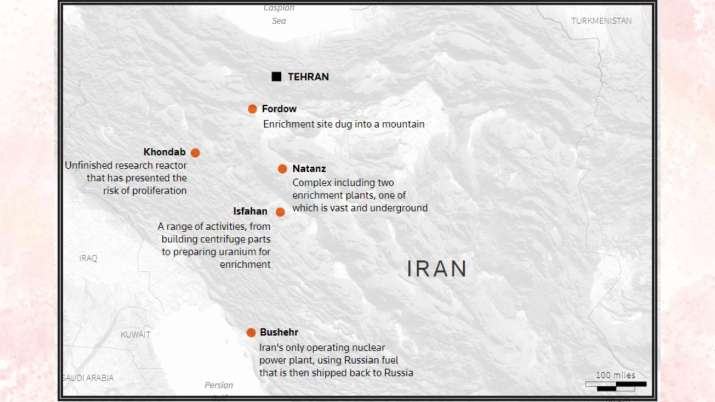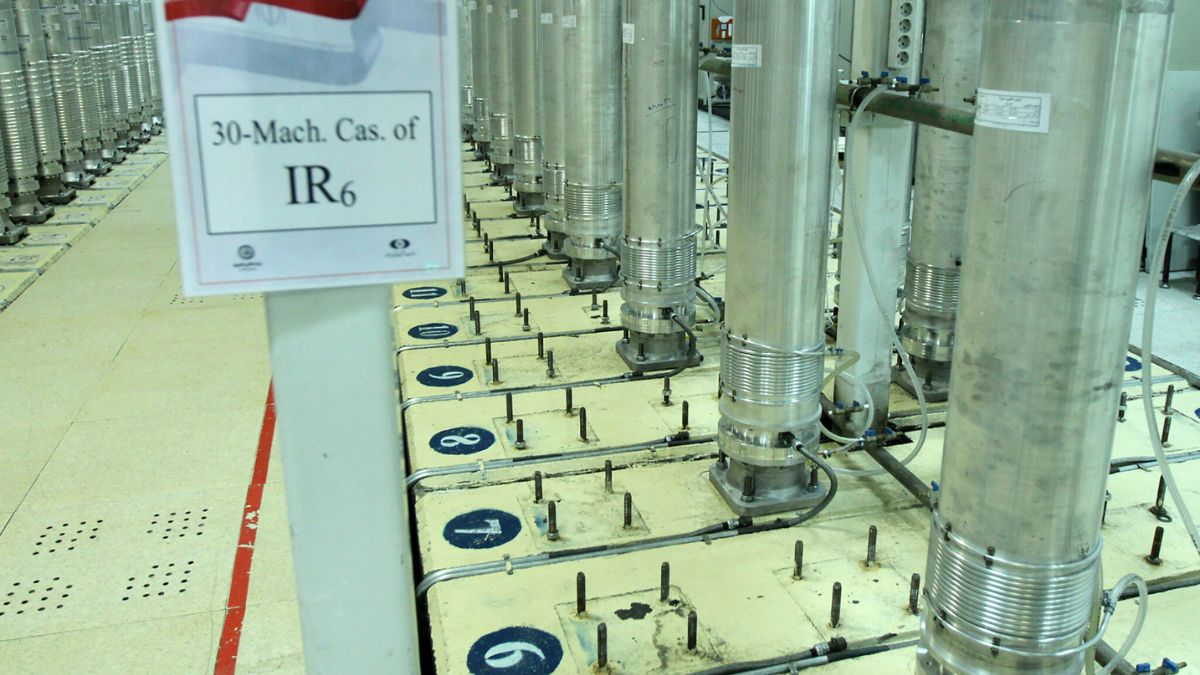Tehran: Following Iran’s missile attack on Israel on Tuesday, there is speculation that Israel could attack Iran’s nuclear facilities, as it has long threatened to do. Expressing serious concerns about the report, US President Joe Biden said on Wednesday that he would not support an Israeli strike on sites linked to Tehran’s nuclear program in response to Iran’s missile attack on Israel. “The answer is no,” Biden told reporters when asked if he would support such retaliation after Iran fired about 180 missiles at Israel on Tuesday.
Below are some of Iran’s major nuclear facilities.
Uranium enrichment at its heart
Iran’s nuclear program spans many places. While the threat of Israeli airstrikes has existed for decades, only some of the sites have been built underground. The United States and the U.N. nuclear watchdog believe Iran had a secret, coordinated nuclear weapons program that it stopped in 2003. The Islamic Republic denies it had one or planned to have one. Iran agreed to restrictions on its nuclear activities in exchange for relief from international sanctions under a 2015 deal with world powers. That pact collapsed after then-President Donald Trump withdrew from the United States in 2018 and Iran began abandoning restrictions the following year.

Read: Iran’s missile capabilities: strategies Israel uses to counter the threat | Complete comparison
It’s worth mentioning that Iran has been expanding its uranium enrichment program since then, reducing the so-called “breakout time” it would need to produce enough weapons-grade uranium for a nuclear bomb from at least a year to a matter of weeks. the 2015 agreement. In reality, making a bomb with that material would take longer. How long is less clear and is a matter of debate.
Iran is now enriching uranium to 60 percent fissile purity, about 90 percent weapons grade, at two sites and theoretically has enough material enriched to that level, if further enriched, for nearly four bombs. according to the criteria of the International Atomic Energy Agency (IAEA), the UN control body.
Natanz
A complex at the heart of Iran’s enrichment program on a mountain-adjacent plain on the outskirts of the Shiite Muslim holy city of Qom, south of Tehran. Natanz is home to facilities that include two enrichment plants: the massive underground Fuel Enrichment Plant (FEP) and the above-ground Pilot Fuel Enrichment Plant (PFEP). An exiled Iranian opposition group revealed in 2002 that Iran was secretly building Natanz, sparking a diplomatic standoff between the West and Iran over its nuclear intentions that continues today.
The FEP was built for commercial-scale enrichment and has the capacity to house 50,000 centrifuges. Some 14,000 centrifuges are currently installed there, of which approximately 11,000 are in operation, refining uranium to 5 percent purity.
Diplomats who know Natanz describe the FEP as being about three stories underground. There has long been debate about how much damage Israeli airstrikes could do to it. FEP centrifuges have been damaged by other means, including an explosion and power outage in April 2021 that Iran claims was an attack by Israel.
The above-ground PFEP houses only a few hundred centrifuges, but Iran is enriching there to 60 percent purity.
fordow
On the opposite side of Qom, Fordow is an enrichment site dug into a mountain and therefore probably better protected from possible bombing than the FEP. The 2015 deal with major powers did not allow Iran to enrich Fordow at all. It now has more than 1,000 centrifuges running there, a fraction of them advanced IR-6 machines that enrich up to 60%. Additionally, Iran recently doubled the number of centrifuges installed at Fordow, with all the new machines being IR-6.
The United States, Britain and France announced in 2009 that Iran had been secretly building Fordow for years and had not informed the IAEA. US President Barack Obama said at the time: “The size and configuration of this facility is incompatible with a peaceful program.”
Isfahan
Iran has a large nuclear technology center on the outskirts of Isfahan, its second largest city. It includes the Fuel Plate Fabrication Plant (FPFP) and the Uranium Conversion Facility (UCF) that can process uranium to obtain uranium hexafluoride that is fed to centrifuges. In Isfahan there is equipment to produce uranium metal, a process that is particularly sensitive to proliferation as it can be used to design the core of a nuclear bomb.
The IAEA has said there are machines to make centrifuge parts in Isfahan and described it in 2022 as a “new location.”
Khondab
Iran has a partially built heavy water research reactor, originally called Arak and now Khondab. Heavy water reactors pose a nuclear proliferation risk because they can easily produce plutonium, which, like enriched uranium, can be used to make the core of an atomic bomb.
Under the 2015 agreement, construction was stopped, the reactor core was removed and filled with concrete to render it unusable. The reactor was to be redesigned “to minimize plutonium production and not to produce weapons-grade plutonium in normal operation.” Iran has informed the IAEA that it plans to bring the reactor into operation in 2026.
Tehran Research Center
Iran’s nuclear research facilities in Tehran include a research reactor.
Bushehr
Iran’s only operating nuclear power plant, on the Gulf coast, uses Russian fuel that Russia recovers when it is spent, reducing the risk of proliferation.
Is it the right time to attack Iran’s nuclear facilities?
As Israel contemplates its options regarding Iran’s nuclear facilities, the question of timing and strategy remains critical. While the threat posed by a nuclear-capable Iran is real, the implications of a military strike are complex and fraught with uncertainty. Whether now is the right time to attack these facilities is a debate that continues to evolve amid a rapidly changing geopolitical landscape.
(With contributions from the agency)
Disclaimer:
The information contained in this post is for general information purposes only. We make no representations or warranties of any kind, express or implied, about the completeness, accuracy, reliability, suitability or availability with respect to the website or the information, products, services, or related graphics contained on the post for any purpose.
We respect the intellectual property rights of content creators. If you are the owner of any material featured on our website and have concerns about its use, please contact us. We are committed to addressing any copyright issues promptly and will remove any material within 2 days of receiving a request from the rightful owner.

